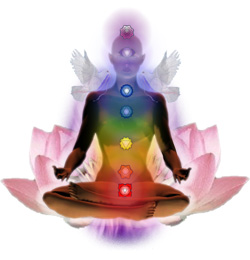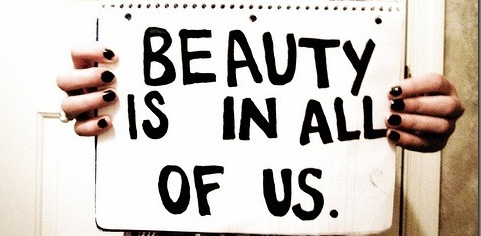Shamans: Modern Day Witch Doctors or Miracle Workers?
 If you have a problem, you might talk to a friend, or consider going to a therapist—but what about a shaman? That’s right—a real life, modern day shaman. For many, the word conjures up an image of a wizened old man shaking a rattle over your body. But today, more and more women are turning to them for help.
If you have a problem, you might talk to a friend, or consider going to a therapist—but what about a shaman? That’s right—a real life, modern day shaman. For many, the word conjures up an image of a wizened old man shaking a rattle over your body. But today, more and more women are turning to them for help.
Kathy (she didn’t want her last name used) decided to visit a shaman when she was at a crossroads. “I was in a place in my life where I had a lot of choices to make and wanted to see if a shaman could help me,” remembers Kathy who works at a local college. “I had just quit my job and did not quite know what I wanted to do.”
The appointment with the shaman was a transforming experience for Kathy. “She was a very powerful lady. We sat and she was able to ‘see’ issues and things that I needed to deal with. I remember being very emotional, even though I am not an overly emotional person.”
Lynnette went to a shaman for help with her chronic back pain. For privacy issues, she didn’t want her name used either. An art director who works in film and TV, she was interested in learning more about the unique approach to treating her pain.
“The shaman can ‘see’ everything about you—all your past injuries. They know more than you do about your body and what it is holding onto that may be making you sick or causing you pain,“ according to Lynnette. “So if you believe in it–this is very important that the patient believe– healing can happen instantly.”
Not so fast, according to Dr. Roberto Blanco. The Assistant Professor of Psychiatry at The University of North Carolina at Chapel Hill says a healthy dose of caution and common sense is important when seeking out alternative remedies.
He’s worked with people for whom shamanism is part of their culture and says not everything they offer is a good fit for the average patient. “Some shamanic remedies can be harmful and it’s important to watch out for them,” he says.
He lists hallucinogens like peyote and san pedro as potentially dangerous and says, “You shouldn’t take whatever a shaman puts in front of you.”
In addition to certain remedies being harmful on their own, Dr. Blanco points out that there’s also a chance for bad interactions with other drugs you may be taking. For example, St. John’s Wort can have adverse reactions with some drugs used to treat depression. Bottom line, “Always discuss with your healthcare provider what therapies you’re taking—even if it’s herbal,” he advises.
Mark Blair is a shaman practicing in Seattle, Washington. He says, “Shamanism consists of working with the spirit world to receive guidance for the healing of individuals physically and emotionally, for the divination of information, and for the growth and well-being of the community that the shaman serves.”
Blair isn’t an ancient witch doctor. He isn’t a doctor at all. He started practicing after nearly three decades of working in the tech industry.
“Shamans traditionally saw people with all kinds of problems, physical and emotional,” he says. “In our culture, we tend to see people for emotional issues, although there are some Western shamans who specialize in physical issues.”
Each shaman practices differently, with unique experiences in studying shamanism as well as offering varying types of remedies to their patients.
Whether it’s a physical or mental issue people are seeking help for, it’s important to note than unlike some of the more mainstream types of healthcare in the United States, shamans aren’t regulated.
“Currently there is no local, state or nationally recognized certification for shamanic practitioners,” says Blair. “There are several “schools” where one may take classes, learn and practice techniques, and receive a certificate stating that the person is now a practitioner.”
Blair himself has studied shamanism extensively with many different groups and foundations as well as individuals.
“There is no regulation of these schools so the certificate is only meaningful within the context of that school’s programs,” he points out. “However, the certificate does indicate to the client that the person was dedicated enough to the practice to take a formal course.”
For some patients, the lack of regulation isn’t an issue. “I think it would be very clear from the get go if the person is a real shaman or not,” says Lynnette.
“Traditional medicine has its place, but I am totally open and have had great results from a combination of eastern and western medicine. A shaman to me is much more then an eastern doctor, he or she is a wise spiritual guide,” says Kathy.
“A ‘good’ shaman–in my judgment– is one that engages ALL resources to the aid of the client. He believes in making the most of all types of medicine,“ says Blair. “Shamanic work is not done to the exclusion of Western medical resources…I may be working with a client while also having them see a dietitian or physical therapist, or their family doctor. The overall health of the client is the result of many resources acting on their behalf.”
When treating people, “There is room for alternative treatments,” says Dr. Blanco, but he says there should be scientific evidence to back them up (such as light therapy for SAD) and patients need to recognize what they’re dealing with.
When asked if they would be interested in seeing a shaman again, both Kathy and Lynnette said they would.
It may not be for everyone, but Kathy has warm memories about her last visit to a shaman, “I was left with a feeling of peace and the thought that in the end, everything works out like it should. We are the ones that get in the way of our own future sometimes with our expectations and pressure.”
About the Author:

Malia Martine Karlinsky, Love and Sex Editor for GalTime.com, is a multi-media writer and producer living near Seattle Washington. Before producing two cute kids, Malia worked as a Producer for ABC News. You can find Malia at her blog www.yesterdayontuesday.com where she cooks, crafts and hunts for vintage finds.
Originally published May 21, 2012













